Designing against clichés, stigma, and sexism: an Interview with Jessica Walsh
One of today’s most influential female designers, Jessica Walsh, shares her approaches to branding, insights from burnouts, and her motivation behind mental health and female advocacy activities.
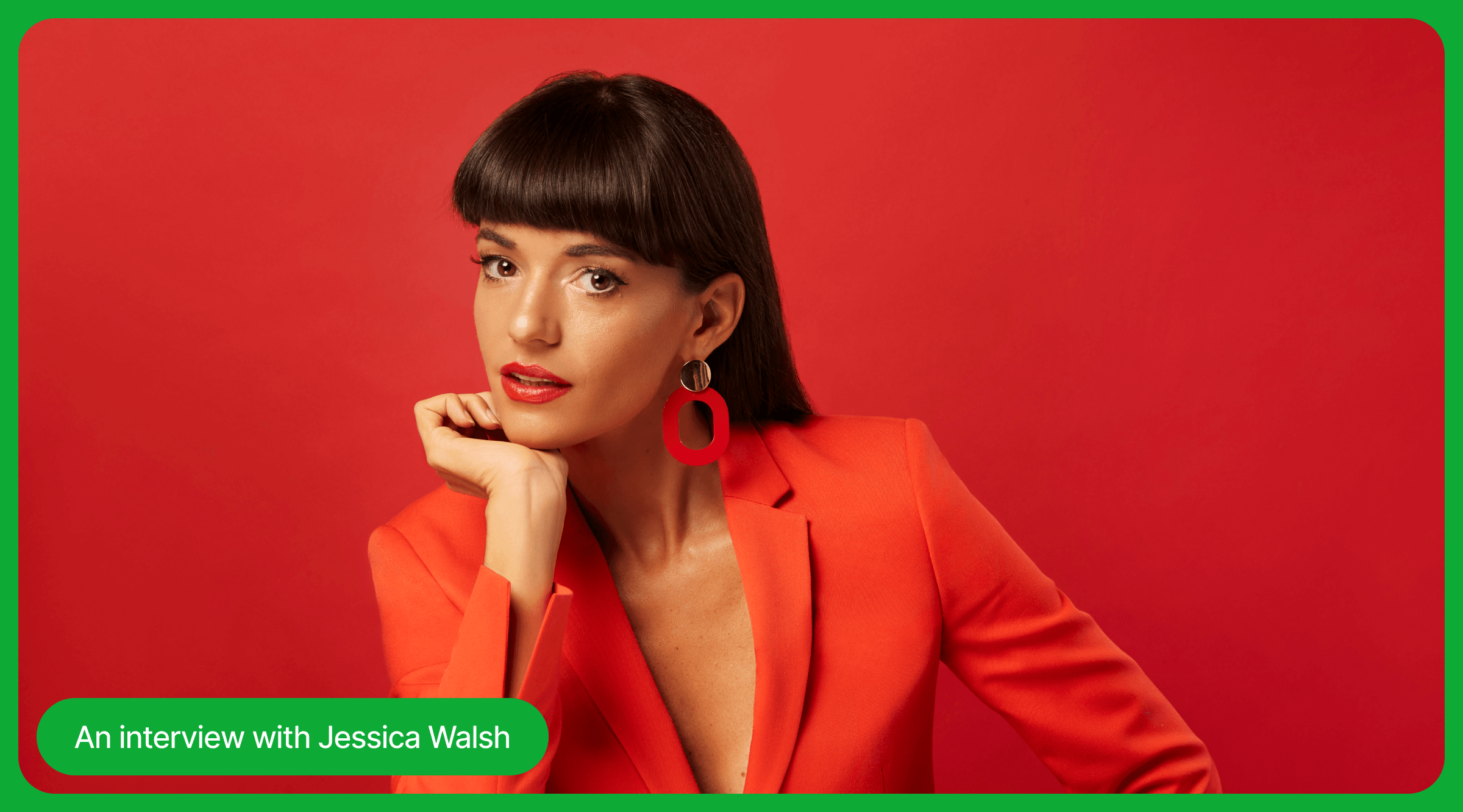
As a teenage design and coding enthusiast, Jessica Walsh started an HTML help website that taught other designers how to code their own websites. Since then, she’s strived to pass on her design knowledge on a larger scale and persistently chased this goal.
After decades of a fruitful design career where Walsh led branding and campaign work for Netflix, Google, Snapchat, TED, and Apple, she founded her own creative agency, &Walsh, taking the role of creative director. She lectures at creative conferences and universities around the world, and her work has been featured in numerous galleries, books, and magazines. In addition to her plentiful commercial and educational activities, Walsh advocates for women, speaks up about mental health, and exposes social media manipulations in her influential passion projects.
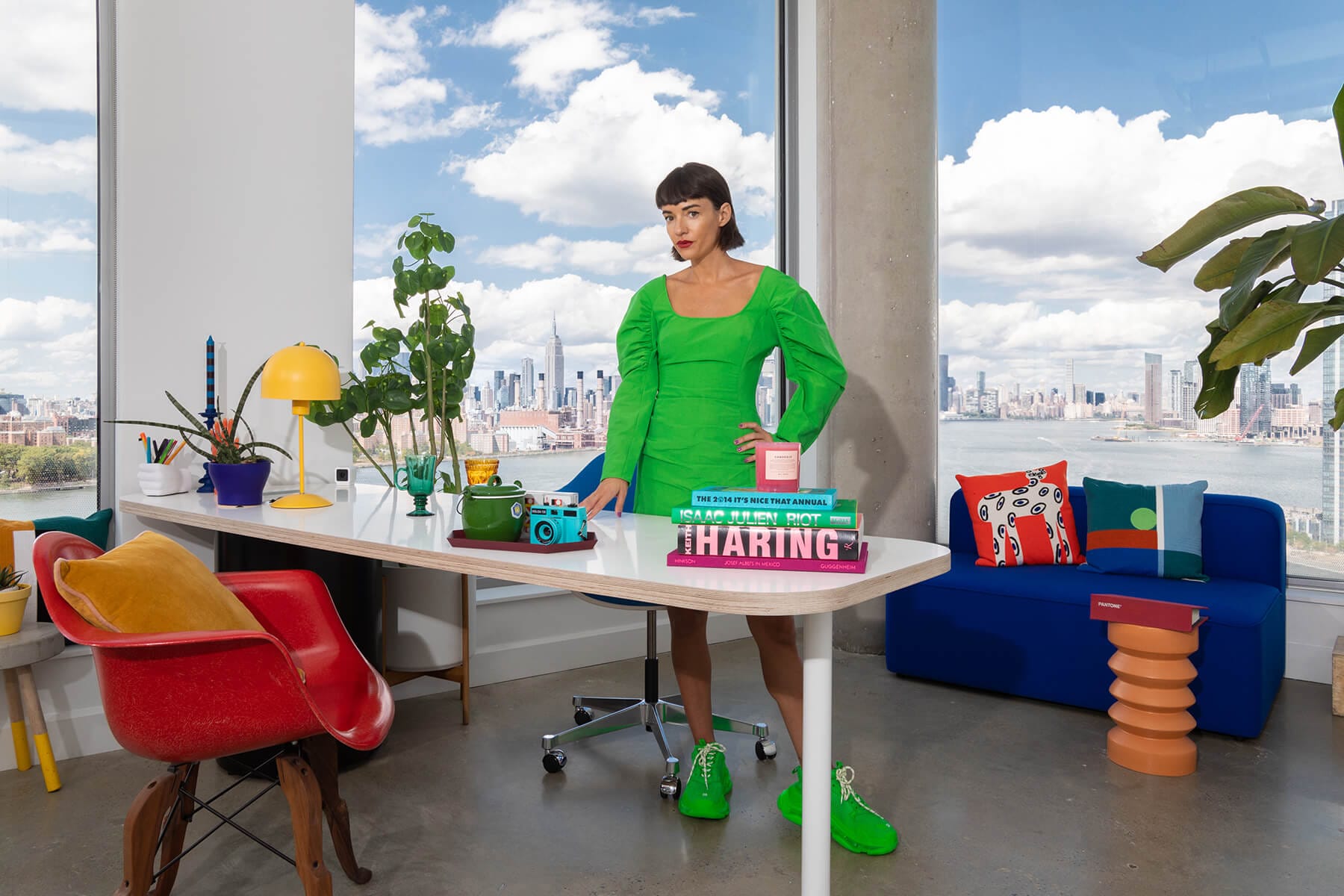
In this interview, Jessica Walsh speaks about her ways of creating brand identities, fighting burnout, and seeking justice, armed with design, empathy, and an enormous desire to listen and understand.
Seeing the unique weird as the most precious asset
When launching &Walsh in 2019, we put a lot of intention behind the onboarding process and strategic foundation work for branding. We don’t have one set style for our branding work with clients: all of our creative work is a reflection of the brand’s unique personality—from copywriting, typography, and color choices to the images we create.
“I don’t believe in putting my personal style onto a brand unless it matches the brand’s personality and makes sense for its goals and target audiences.”—Jessica Walsh
One example of our approach is the &Walsh rebranding work for Plenty, an indoor vertical farming company. They came to us for a rebrand with two goals: to convey the uniquely craveable flavor of Plenty produce and to create a warmer, more approachable brand that felt accessible to all. To understand their key challenges and rebrand opportunities, we started with what we call the “brand therapy” phase. The goal of these “brand therapy” sessions is to help brands “find their weird.” We believe every brand has something weird and unique about them, and that’s their most valuable asset.
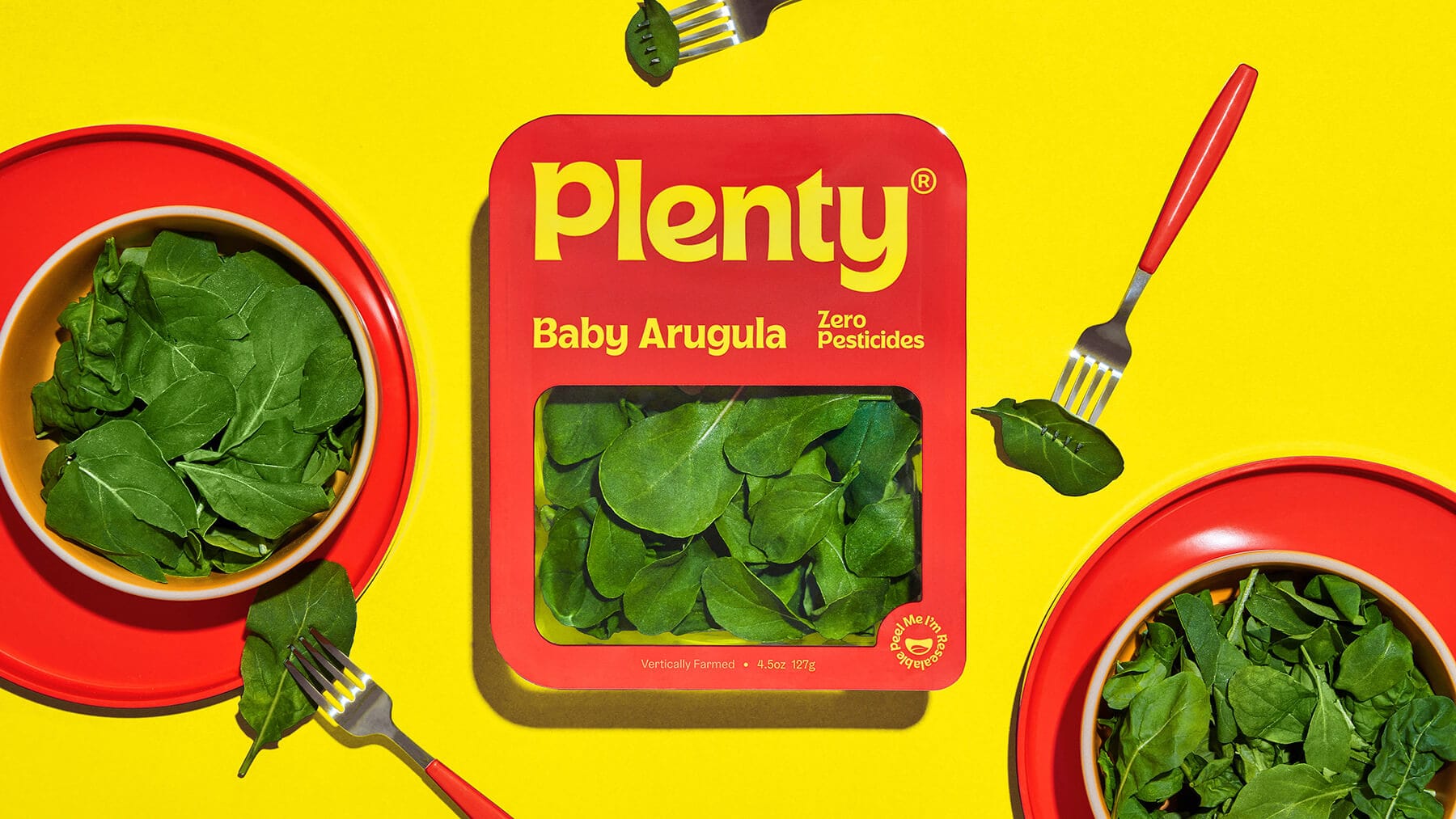
A great brand is like a great person: true and honest about who they are and unafraid to show their true colors. Too often, brands are told to suppress idiosyncrasies or opinions out of fear of how consumers will respond. The problem is that when you try to please everyone and avoid anything that might offend someone, you wind up with a “vanilla” brand that says nothing. No one hates those brands, but no one truly loves them, either. The most successful brands unapologetically stand for who they are.
In recent years, I’ve seen many design studios and agencies try to replicate the “startup brand” look and feel. As a result, these brands look identical, with their millennial pinks, blues, and yellows and clean, minimal typography. When you follow what everyone else is doing and create a trendy brand, you’re putting a ticking time bomb on your branding. We strive to create beautiful, memorable, differentiated brands that people care about.
During the market exploration for Plenty, we learned that the indoor vertical farming narrative doesn’t really matter in the aisle. We also learned that their competitors rely on the product itself to attract customers rather than having packaging and branding that speaks to consumers across the produce category. We saw a unique, “weird” opportunity for Plenty to stand out on shelves through packaging that looks and feels delicious. Rather than sticking to typical healthy green visual cues, we took inspiration from desirable food categories, which is reflected in both the identity and packaging work. We also created custom typography inspired by plants: a humanist sans serif font with leaf-like corners and terminals.
Integrating a creative play to combat burnout
Eight years ago, I had a momentary burnout. I was working round the clock: nights and weekends were devoted to client projects. At that moment, for the first time, I found myself dissatisfied with my career. That’s not to say the work was uninspiring; I just didn’t feel fulfilled. This burnout made me realize I needed to shift back to self-authorship, and I decided to dedicate a certain percentage of my time to passion projects.
I was worried at first that this would detract from the client side of the studio. However, I quickly found that when I have a personal project going, I’m much more enthusiastic, and it makes me much faster and more productive with our client work.
“Discoveries made through experimentation in my personal work often feed back into client work.”—Jessica Walsh
If you’re feeling burned out, ask yourself what you’d rather be doing. Maybe it’s a passion project, experimenting with calligraphy, learning a new type of dance, rock climbing, or lying on the beach doing nothing. Whatever it is, make time for it. You need to satisfy your soul to make great work. Plus, these other life experiences can unconsciously inspire your professional work.
I also encourage any creative experiencing creative burnout to integrate creative play into their workflow. Play is a mindset where you are experiencing a state of “flow” and have the optimal balance of challenge and opportunity based on your skill set. You can “play” within games, but you can also play within your work. “Creative play” means allowing yourself enough time and space to experiment without the risk of failure.
Making your privileges a change driver
While I’ve faced adversity in my path to where I am today, I’ve also had many privileges. It’s important to recognize privileges and understand that hard work, passion, or persistence is sometimes not always enough to make it to the top. Some people face adversities that are difficult to overcome.
“Having both struggles and hurdles in my life while also having privileges has made me want to advocate for others.”—Jessica Walsh
How can we use our privileges to create change? We can use our business resources and team creativity to advocate for more diversity and social causes, shine a light on important topics like mental health, pass on opportunities, or spotlight others’ work.
I want to invest even more in meaningful projects such as Ladies, Wine & Design, Let’s Talk About Mental Health, and Sorry I Have No Filter. Ladies, Wine & Design is a global nonprofit initiative aimed at championing and mentoring creative women and fostering women’s growth into leadership roles.
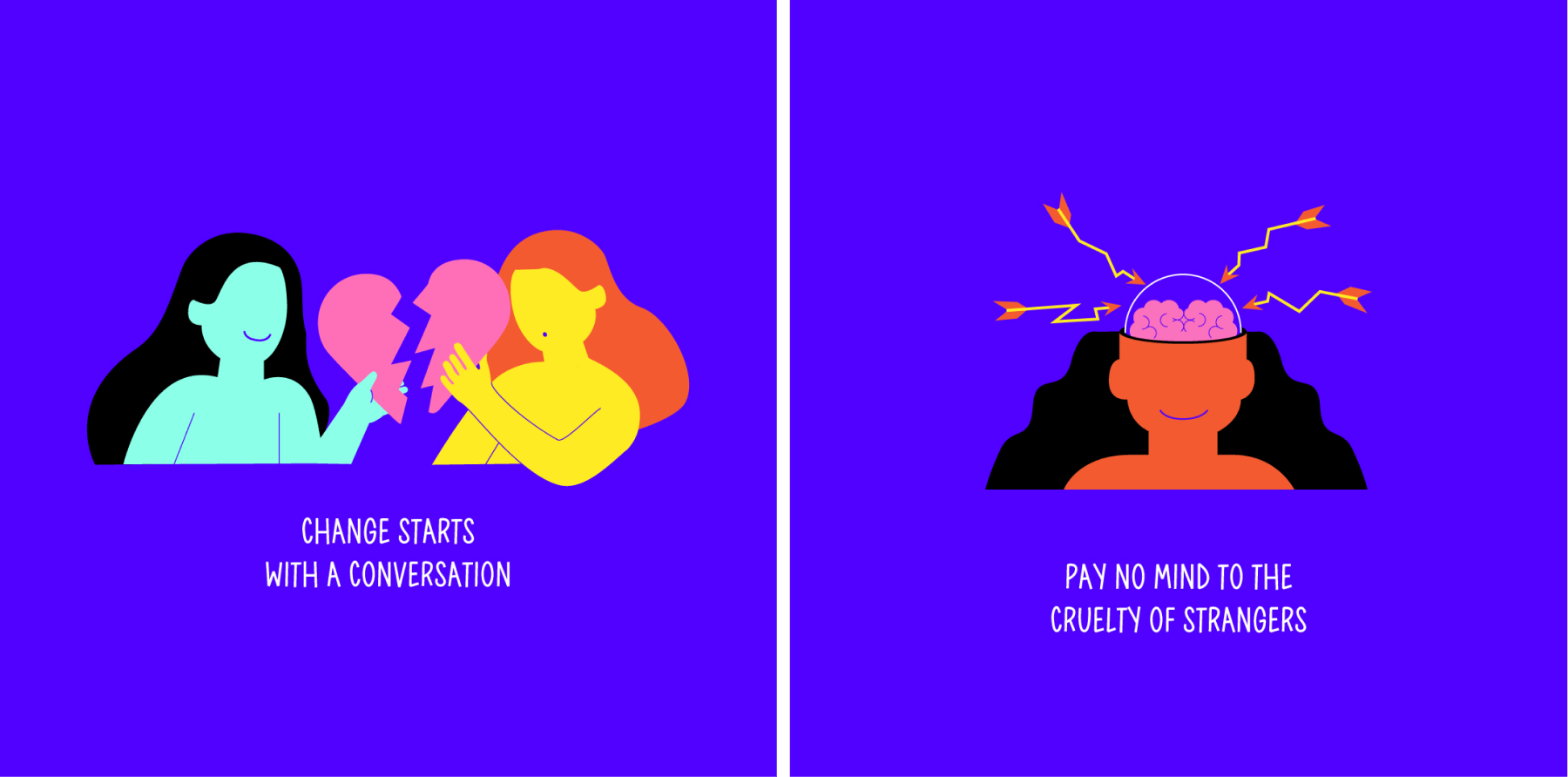
Let’s Talk About Mental Health is a website and Instagram account devoted to mental health that uses design to open up conversations about issues that typically have a stigma around them and create a safe space for others to share their stories.
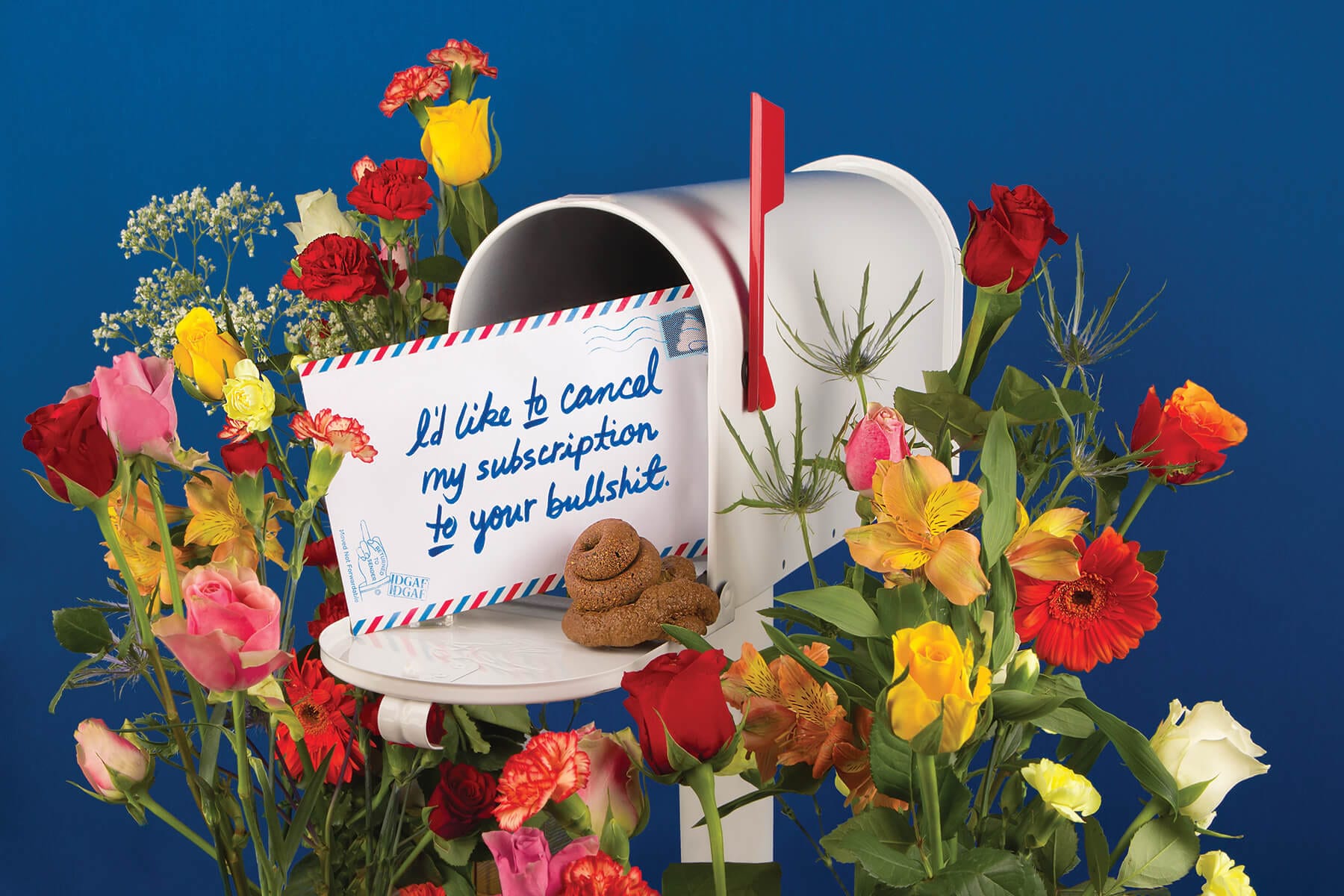
Sorry I Have No Filter is a photographic image series born in response to the toxic positivity and manipulated perspectives we experience on social media. The project allows me to share my thoughts and emotions authentically and, despite the name, unapologetically. Life isn’t always perfect, and sometimes hard truths must be told. In recent years, the No Filter series has become an opportunity to promote social justice, highlighting different causes, diverse voices, and steps to action.
Celebrating women through Ladies, Wine & Design
Open a design history book, and you’ll see that almost all the famous designers mentioned are white men. To this day, only 5-12% of creative directors or CEOs are women, depending on the country you live in.
For many years, I had a great career going on my own. I worked at Pentagram and as an art director at Print Magazine, where I developed my surreal photo illustration style, which won me many awards and magazine features. Also, I had a thriving freelance business. Nevertheless, I faced all kinds of sexism in my career: hate mail, jealous remarks, and outright sexism even from other women. It made me realize that sometimes women can be unsupportive of other women because our chances of reaching the top are so much slimmer than our male counterparts.
“When Stefan Sagmeister and I launched Sagmeister & Walsh, there were a lot of sexist remarks assuming that I had only been made a partner because we were dating or sleeping together, which wasn’t true and once again reminded me of how little society respects women.”—Jessica Walsh
Society ignores women’s intelligence, drive, and accomplishments and assumes the only way they can become a partner is by sleeping with a man. Stefan and I worked together for many years: I helped grow and run the business while creatively directing and producing larger and larger client projects. At some point, I was ready to start my own studio, but Stefan didn’t want me to leave, so I proposed the concept of the studio partnership.
All the sexism I faced became part of the fuel that drove me to start Ladies, Wine & Design and try to create change in the industry. Ladies, Wine & Design focuses on the idea of women supporting rather than competing against each other. We hold free mentorship circles, creative meetups, salon nights, and conferences.

While we may not have concrete data on the demographics of BIPOC women and nonbinary people in the industry, the fact alone that Ladies, Wine & Design has chapters in 280 cities worldwide is a testament to the need for this initiative. I know that members of Ladies, Wine & Design chapters have gone on to open studios, start businesses together, and support one another in job searching. I’ve also heard stories of our members feeling empowered to leave their toxic, sexist work environments to work for themselves. While we may not have the stats showing how things have changed, we have many success stories that represent a powerful shift.
Since founding Ladies, Wine & Design, I’ve had the privilege of meeting so many amazing women in the creative field. I’ve formed new connections and been inspired by the diverse group of women and nonbinary creatives in our community.
“When we work with each other rather than against each other, so much more can be accomplished.”—Jessica Walsh
Many of the creatives I admire today are women and nonbinary people: Debbie Millman, Roxane Gay, Paula Scher, Lotta Nieminen, Mona Chalabi, Shantell Martin, Blair Imani Ali, Aries Moross, Isabelle Boemeke, and many others. Also, my mom is my greatest role model. As I get older, I become increasingly sentimental about family—family is really everything to me. My mom helped shape my work ethic, morals, outlook on life, and many qualities that have helped me be and get to where I am today.
Kindness and empathy are crucial steps toward change, but there are also systemic changes we need to implement to see real change. We need to ensure more women are credited and celebrated in awards and history books. Our educational institutions need to hire more women as professors and instructors so students can see people who look like them in leadership roles and learn from them. Our government needs to do more for parents and families and make it more possible for a woman to have a family and a career if that’s what she wants. Our industry needs to eliminate the misogyny and sexism that are present at all levels, including at the top. We must collectively value women’s work the same way we value men’s.